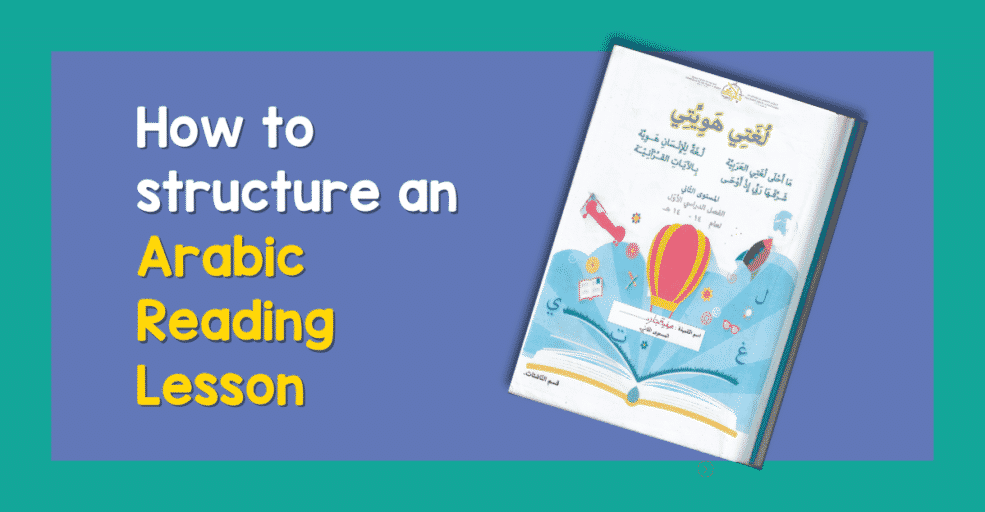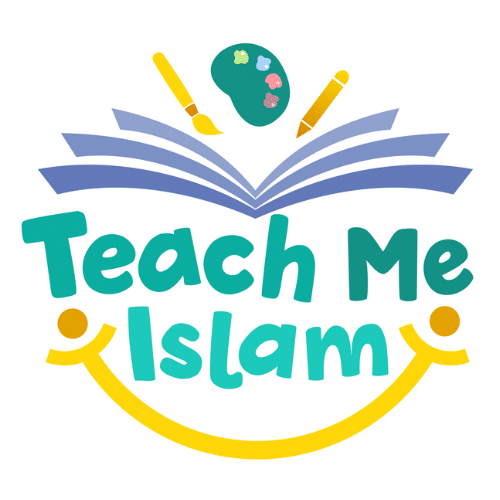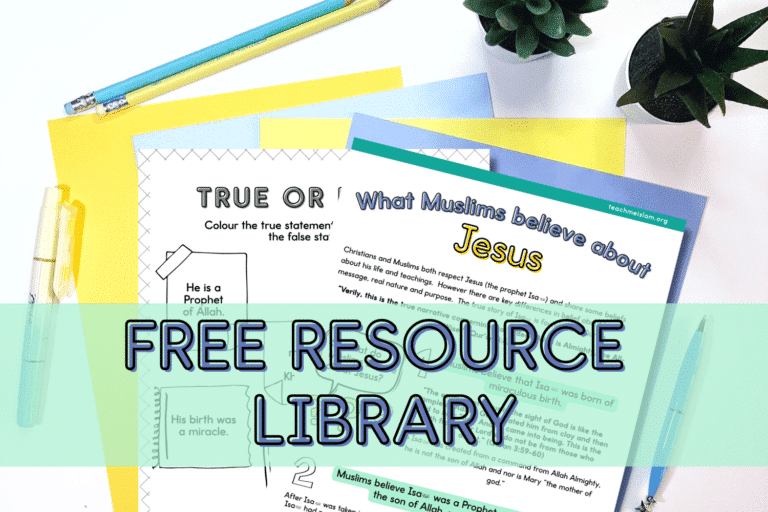When creating my own Islamic text reading comprehensions in English, I looked over my daughter’s Arabic books from her school for inspiration. The Arabic reading lessons were all structured so well allahumma barik. This clear system was used for each topic and as a result the students really had an idea of what to expect. The texts used were all hadith and the different parts of the lesson all aimed to help them understand them and improve their Arabic language. I’ve included pictures so you can see the structure in action. These Arabic reading lessons were for students aged 7-8 but the structure can be applied to any age, the text and grammar portions would just need to be varied.
Pre-teach new vocabulary

Before beginning reading, identify words that are tricky to pronounce or understand. The words that are difficult to read should be modelled by the teacher and then practiced/drilled. This prevents stopping and starting during the reading of the text. It builds confidence and helps develop fluency. It can be disheartening when you are stumbling over every other word. This technique helps to prevent that.
Explaining the meaning of words that are likely new to your student really helps them to relate to the text and understand it from the beginning. Have you ever faced a page of writing and only understood half of the words. It is dispiriting and discouraging. It can make you feel like just giving up. Additionally, when you are building reading fluency, you are concentrating so hard on the actual mechanics of reading that the meaning of the words can become secondary. When you spend time focusing on that vocabulary before beginning to read the text, it massively aids understanding. Teachers pre-teach vocabulary, a scaffolding technique, to ensure that the task ahead is not too overwhelming and accessible to everyone and it works wonderfully in Arabic reading lessons.
Practice reading the text
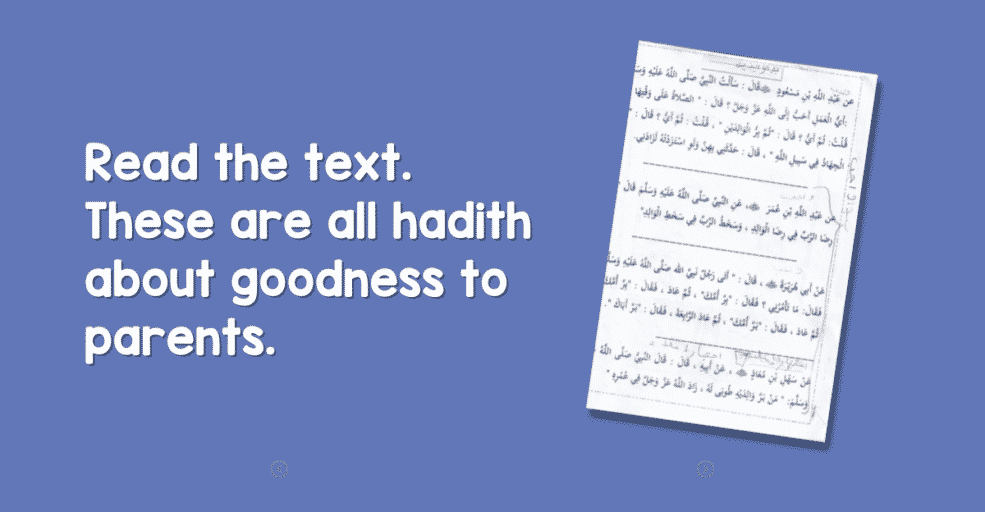
Practice is an essential part of Arabic reading lessons. This can be done in several ways. The first is instructor led reading. The teacher reads the text aloud and the students read along with them. The second is group reading where the students all read together as a group. The third is small group reading, maybe even in pairs. Next, is reading to a parent or teacher. Finally reading independently to themselves. Reading the same text repeatedly is so beneficial. It builds not only fluency but confidence.
A reading tracker was sent home to parents by my daughter’s school to encourage regular practice. As students become more fluent bithnillah, encourage them to add expression and change of tone.
Check understanding with oral questions
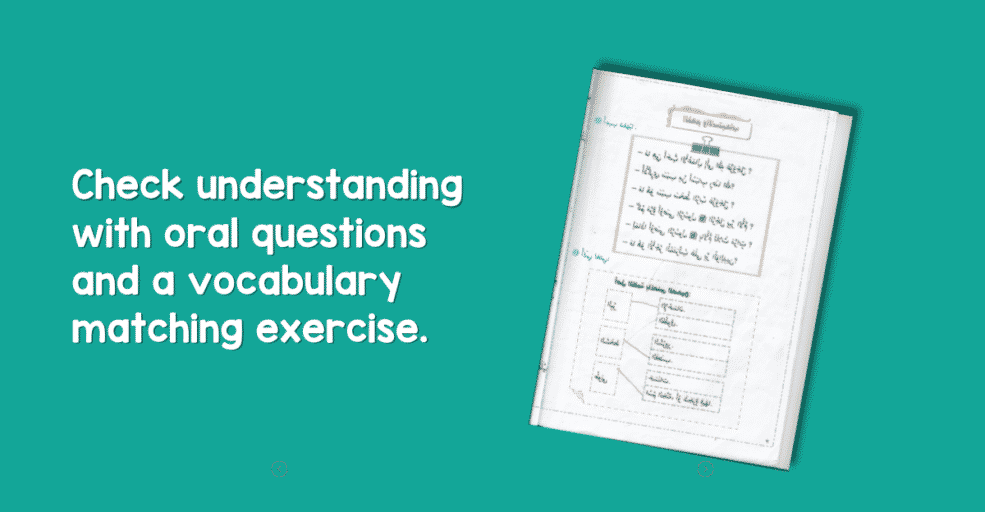
Oral questions are a natural part of Arabic reading lessons. You can quickly check if students grasp the meaning of the text. Moreover, it also encourages discussion and appeals to different learning styles. Some kids really struggle with writing and so you want to encourage a response to the text that isn’t always with their pencil in hand.
Include vocabulary exercises in your Arabic reading lessons
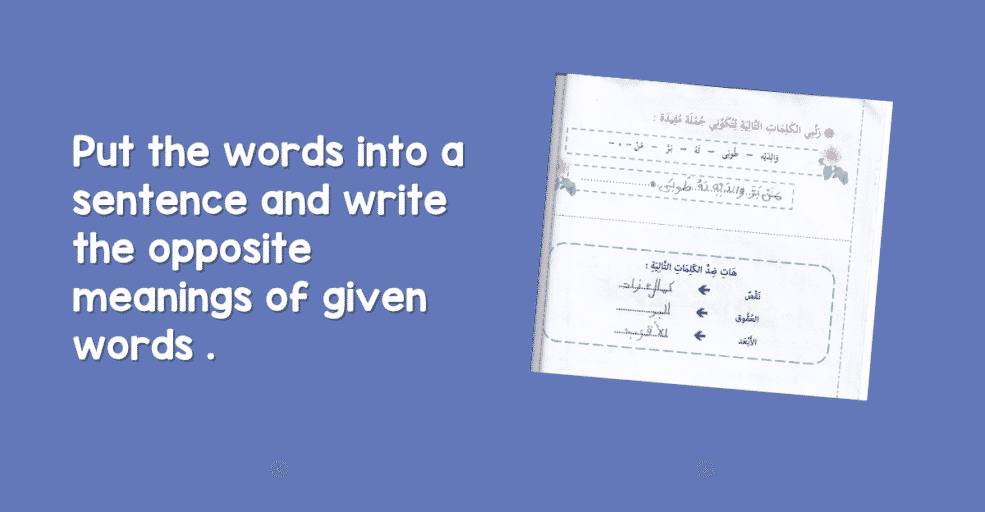
Vocabulary exercises can help them to retain those new words that were pre-taught before reading. Also, they can help to develop their inference skills, deriving the meaning of words through their context in the text.
Ideas include:
- Match words with their antonyms (words with the opposite meaning)
- Match words with their synonyms (words with a similar meaning)
- Match words with their definition (give 2 or 3 choices)
- Arrange words into a sentence
- Use new words in sentences of your own.
Introduce grammar rules and use examples from the text.
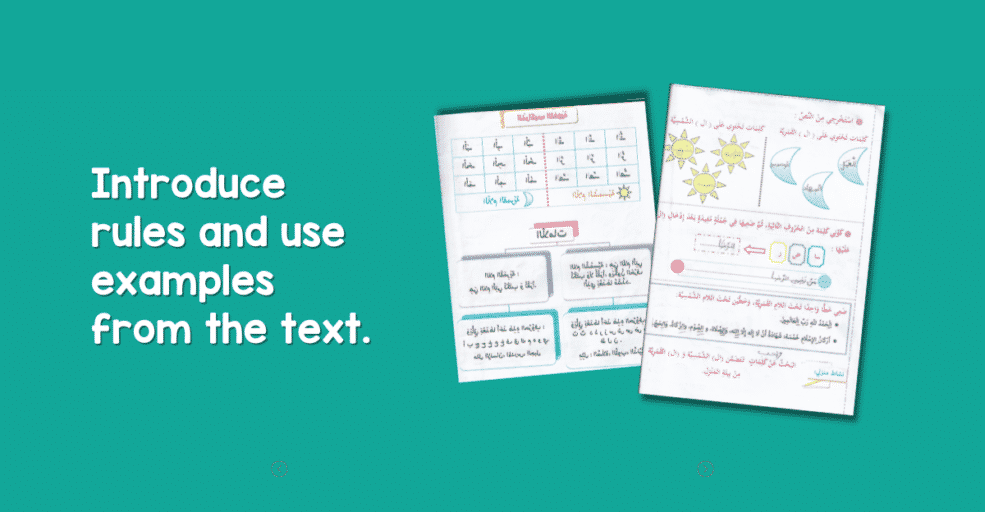
This is a way to really bring grammar to life. By now students should be familiar with the text. When you apply grammar rules to a familiar text instead of new sentences or examples, it makes them more meaningful. It also allows the student to purely focus on the grammar rather than the meaning of a passage. Studying grammar in context helps them to apply their grammar when reading instead of viewing it as something restricted to a textbook.
Include dictation in your Arabic reading lessons
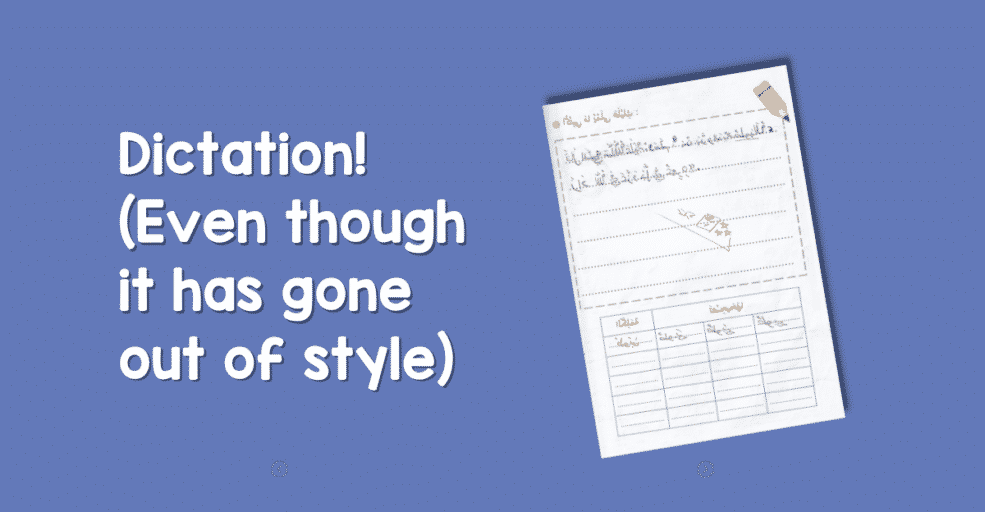
Dictation has gone out of style in English language lessons. However, there are still so many benefits! It helps to improve spelling, handwriting, listening skills and more. Dictation can include part of the reading text, which is even more beneficial when the text is Islamic.
Handwriting and copywork
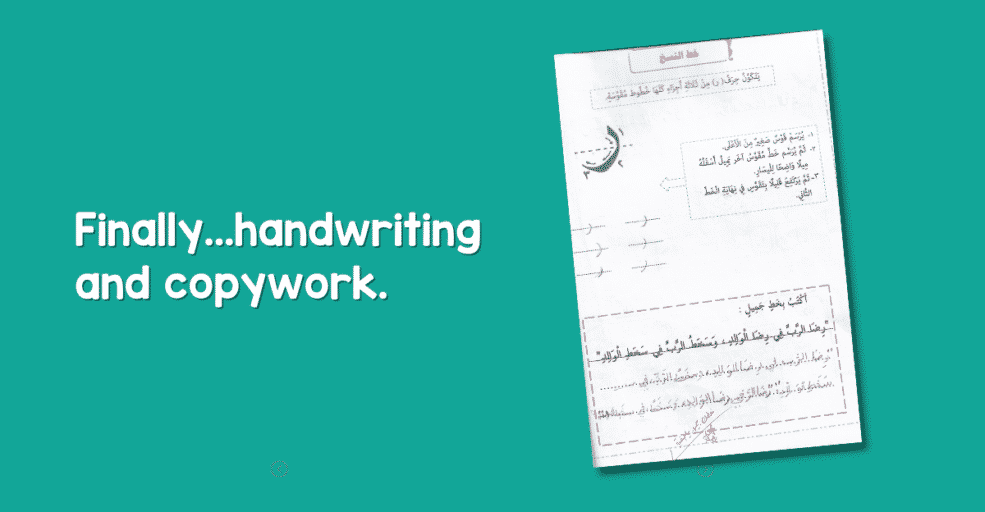
If you homeschool, copywork will likely not be new to you. If you are interested in English copywork of Islamic texts, you can check out these sets here.
Copywork develops writing skills such as leaving adequate space between words, copying accurately, punctuation and handwriting. It’s tempting to abandon dedicated handwriting time once your child has learned proper letter formation but it is still so important to include even very short sessions. Normally when writing, children are formulating their own responses and this means their primary focus is not handwriting. Consequently they forget to form letters properly and neatly. Revision of letter formation doesn’t have to take long but including it in your Arabic reading lessons structure helps ensure that handwriting is progressing towards the goal of legible and neat writing.
Conclusion
I hope this blog post provides some inspiration for how to structure Arabic reading lessons. This simple formula can make such a difference. Also, when you repeat this structure learners can concentrate on the new material rather than trying to work out what is being taught.
The examples in the blog post images were from a lesson about goodness to parents.
The topics for the book (half a year) were
*kindness to parents
*rights of the neighbour
*rights of the helper/servant
*removing harm from the paths
*manners of joking
*good character
*manners of laughing
*Using the tongue for good
*Manners of giving salaam
May Allah bless you and your family.
Here are some other blog posts you may be interested in:
7 surprising ways they teach Islamic Studies in Muslim countries
What are Islamic Comprehension Passages and why you should be using them

